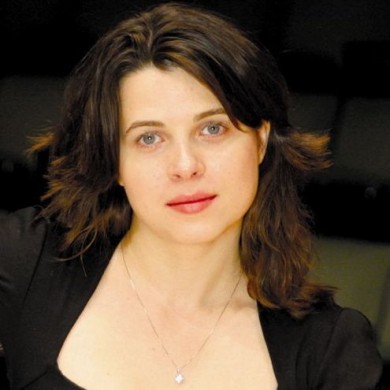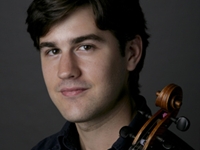Two young musicians in works for viola and piano offer an admirable program

Marina Radiushina
The viola is sometimes viewed as the neglected child of the string family, often assigned inner lines and figuration in chamber and orchestral scores. 2011 has proved a banner year for the instrument in South Florida. A superb recital in April by Yuri Bashmet and Kim Kashkashian’s recent program of works by America composers for SoBe Arts’ American Masterworks Festival displayed the instrument’s range and versatility to impressive effect. Violist Nathan Schram and pianist Marina Radiushina, both members of New York’s esteemed Ensemble ACJW, presented a varied program Friday night at the recital hall of the Miami Conservatory of Music in Coconut Grove.
Schram is a gifted young artist with strong technique and projection, backed by a distinctive interpretive agenda and engaging personality. The well-traveled Radiushina counts Serge Babayan and Ivan Davis among her teachers. A technically polished and sensitive player, Radiushina confirmed the strong impression she made two seasons ago when she joined the Bergonzi String Quartet for Dohnanyi’s Piano Quintet at the Mainly Mozart Festival.
 Nathan Schram
Nathan Schram
Schumann’s Marchenbilder (Fairy Tale Pictures) displays the viola’s romantic side. Aided by the live, bright acoustic of the school’s long, narrow recital room, Schram captured the elegant folksiness of the Lebhan with crisp articulation, Radiushina’s figuration fleet and lithe. Schram’s large, rich tone soared in the spaciously phrased Langsam.
Arvo Part’s Fratres exists in multiple instrumental versions; yet this score by the Estonian mystic always exerts a spiritual intensity that is profoundly moving. That is all the more remarkable for the music’s sheer simplicity and directness. Schram and Radiushina were pitch perfect, bringing rapt fervor and incisive power to Part’s distinctive writing.
Brahms’ Sonata No. 1 in F minor, Op.120 is the composer’s own viola transcription of a work originally conceived for clarinet. Unlike the similar arrangement of Brahms’ other clarinet sonata, this score works remarkably well on the string instrument. The players reveled in the evocative autumnal glow of this late romantic score. From the turbulence of the initial Allegro appassionato to the aristocratic spirit of the finale, Schram endowed the score with throbbing power, lovely tone and agile dexterity. Radiushina’s exquisitely shaped keyboard line in the Andante and the dancing sensibility of the Allegretto grazioso were high points of a cogent, heartfelt performance.
Six movements of Manuel de Falla’s Suite Popular Espanola were a tasty musical desert, skillfully transferred to the viola by Schram from the vocal and violin versions. The Polo movement was not entirely convincing on viola but Asturiana took on a newly impressionistic air, seconded by Radiushina’s softly accentuated accompanying chords. Schram really dug into the Nana, sacrificing pristine sonority for gutsy, sultry color. Radiushina’s brilliantly articulated rapid clusters of notes sent the final Pano Moruno into fiery orbit, concluding a highly satisfying recital.
Radiushina plans future Miami residencies in March and November 2012 by members of Ensemble ACJW, a musicians’ collective that combines concert performances with educational and community outreach ventures.
Posted in Performances
Leave a Comment
Sat Dec 31, 2011
at 2:47 pm
No Comments






